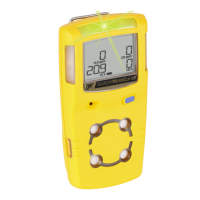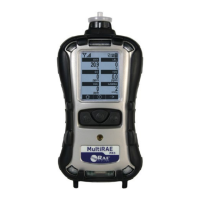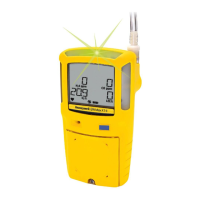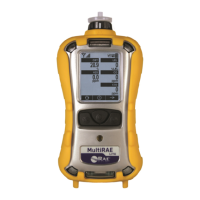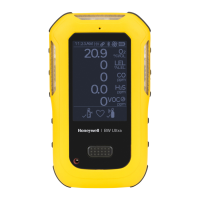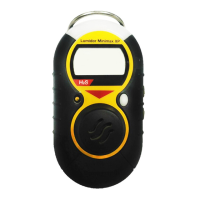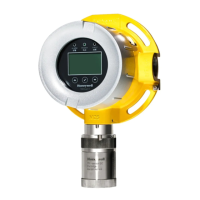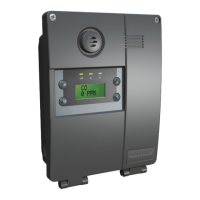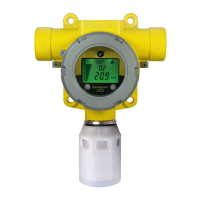10-8
Table 10-5. Fault Relay Conguration options
LCD
Symbol
Description
Source of Signal for Relays
Relay 1 Relay 2 Relay 3
1FLt Instrument fault only Alarm 1 Alarm 2 Inst Fault
2FLt Separate fault relays Any Alarm Maint Fault Inst Fault
CmbF Combined fault relay Alarm 2 Alarm 2 Any Fault
nEtr Network remote mode nviRelay1 nviRelay2 nviRelay3
Once the relays are configured for network remote
mode, they will respond to updates to the three
associated NVIs. The values ST_LOW, ST_MED,
ST_HIGH and ST_ON will cause the relays to
energize. The value ST_OFF will cause the relays
to de-energize. The configuration settings for
“normally energized” and “normally de-energized”
have no effect if the relays are in network remote
mode. However, the relays can still be configured
for normally open or normally closed contacts by
moving the jumpers on the Midas
®
backplane PCB.
Caution
Several failure modes will cause the relays
to de-energize. These modes include power
failures and CPU lockups. Furthermore,
power must be removed from the Midas
®
for
certain maintenance procedures. External
equipment should be designed to prevent
creation of expensive or dangerous conditions
when the relays de-energize. For applications
requiring a highly-reliable digital output,
Honeywell Analytics recommends purchasing
a dedicated DO device.
nviReset
This network variable input causes alarms and
faults to be reset when it is updated with ST_LOW,
ST_MED, ST_HIGH or ST_ON.
nviRequest
Updates to this NVI have the effects listed in Table
10-6. These requests are usually sent by the
network management tool.
Table 10-6. Request Implementation
Request
Node Object
Implementation
Sensor Object
Implementation
0 RQ_NORMAL Set to enabled Send “no inhibit” command
1 RQ_DISABLED Set to enabled Send “inhibit all” command
2 RQ_UPDATE_STATUS Retransmit status Retransmit status
3 RQ_SELF_TEST
4 RQ_UPDATE_ALARM
5 RQ_REPORT_MASK Send capability report
6 RQ_OVERRIDE
7 RQ_ENABLE Set to enabled Equivalent to RQ_NORMAL
8 RQ_RMV_OVERRIDE
9 RQ_CLEAR_STATUS
10 RQ_CLEAR_ALARM
Send “reset alarms and
faults” command
11 RQ_ALARM_NOTIFY_
ENABLE
Equivalent to RQ_NORMAL
12 RQ_ALARM_NOTIFY_
DISABLE
Send “inhibit alarms”
command
13 RQ_MANUAL_CTRL
14 RQ_REMOTE_CTRL
15 RQ_PROGRAM
16 RQ_CLEAR_RESET
17 RQ_RESET
-1 RQ_NUL
Note that disabling the node object has no practical
effect. (This is implemented only for LonMark
compatibility.)
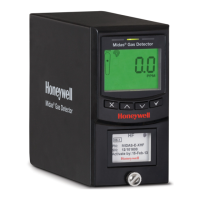
